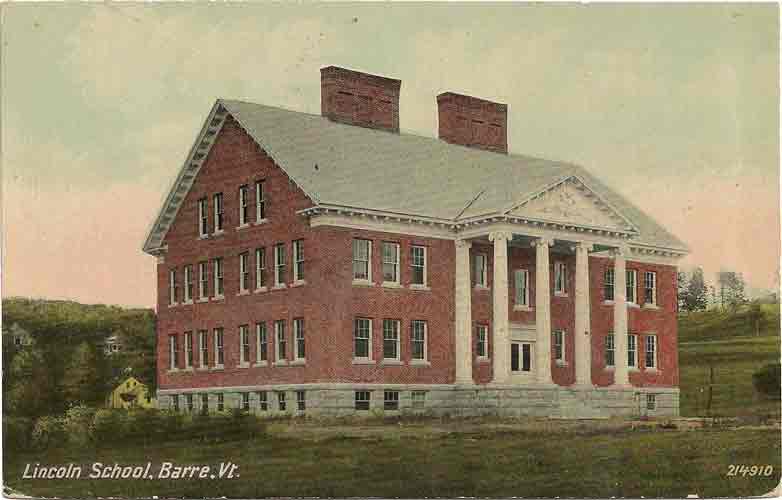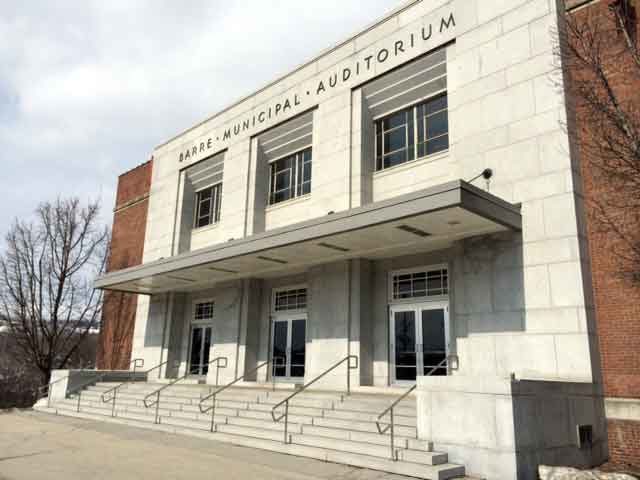


I have been thinking the last few days about now and then–now being the world as I see it and perceive what’s going on, both good and bad—and the world I knew as a young boy. And it was very different. I mean, start with the neighborhood. Course we were in a middle-class neighborhood. I would call it middle class, maybe upper middle class. There was very, very few people who were considered wealthy in Barre at that time, a few connected to the granite industry. And the classes, at least the lower middle, class phasing through to the upper class, distinctions were not that clear, probably because we were small. We all went to the same schools, more or less.
Houses were smaller. There were more families with two and three children than with just one. And almost all these neighborhoods, as I think of them—the male in the family 99 percent of the time was the bread winner. I don’t think, except for the schoolteacher next door, any of the women were employed outside the home. There may have been a small amount of sewing, and in poorer neighborhoods, women took in washings. In other words, your dirty clothes would be brought over somewhere, and then usually there would be a young boy who would cart it back—the washing in a cart, tugging ‘em up the hills. We used to see them all the time. And that was quite an active enterprise at that time.
What was good about that is people didn’t really worry about where their children were in the neighborhood as long as they were more or less within the physical confines, because there was always somebody’s mother who was looking out for them. And most of the people, in fact, knew each other to speak to, in fact, to have conversations with. I don’t see that today.
Our neighborhood: ethnically it was a cross section of Barre. It was certainly Italian. There was German. There was Jewish. There was Scotch. Certainly Irish. All within proximity of each other. And not necessarily segregated by nationality as to where they were.
So a middle class community in Barre, the one I lived in, was a self-governing, self-policing community, a small community. And it related to similar communities up and down the line, and, I think, all over the city.
Our community—the children there went to Mathewson School, which was one of four, five community schools. And if you want to talk about class, the next notch up would have been Lincoln School, which was nearer the newer development in housing in the community and up towards the top of the hill as you head out to what is now farm country. There were homes there that were more expensive, probably by 50, 75 percent, than the homes that I’m speaking of where I was. And people kind of took a pride in their homes. They took a pride in the community. I can’t think of anyone who was poor or who was living in poverty in the sense that we mean that today. There were certainly people that didn’t have a lot of income. But to participate in the community in those days, it didn’t take nearly as much income.
Next door to me, there were two women. One was a schoolteacher, and the other worked in F.W. Woolworth, five and dime store. She was nicknamed “Brownie,” and loved by everybody. Well, they had one boarder, who worked in the sheds, I guess. Was he poor? I don’t really know. I never spoke to him. I watched him come and go. That’s all I can say. But of course, people didn’t live that long in those days, especially people working in the granite industry.
So, as I began to think about this subject, I began to think: well, where were the ramshackle houses and the run-down places? I didn’t know the community that well to say. The Italian community of the North End was certainly middle class by any normal standards. If they had any people living in poverty, I don’t know who they were. And the Scotch lived across the road and up the hill a little bit. And while the Scotch influence was waning in the ‘40s–or ‘30s or ‘40s or ‘50s—such as I’m talking about, as far as their influence in terms of population. I don’t remember any of this grinding poverty of the kind where everything is wrong.
The community was alive. It was healthy. There were policemen on the street. I don’t know whether they carried guns or not. I don’t think they did. If they did, they were underneath their coats. But policemen in Barre generally walked—I would say more than generally, almost universally—walked in pairs. And if somebody was unruly, eventually they’d pull them down to the old Barre city jail where there were three or four cells, and they would sleep it off overnight. And then some would get a fine the next day, and some would just be let out, which was the practice at the time.
I don’t remember crimes of violence or of fire, such as we’ve had recently here. I don’t recall court cases involving rape and abusing women or children making the newspapers, but maybe I didn’t read the newspapers closely enough. Certainly, a lot of that stuff was kept covered up.
I can remember a whole host of projects in the city. The sidewalks that are not now straight used to be straight. The roads that are not now paved were paved. And the reason they were paved was a fellow by the name of Franklin Delano Roosevelt. And the Barre City Auditorium, which inoculated Barre with enormous help of money by bringing all sorts of events and fairs and home shows and that sort of thing.
Barre was a comfortable place to be. There was about 10,000 people. There was about two and a half square miles. We fought about things like swimming pools. We finally built a swimming pool. Earlier, a swimming pool had been in a brook that was fairly highly polluted. But they built bathhouses and ropes and all the things that go with swimming pools.
My school, Mathewson School: there were eight grades, two seventh grades, two eighth grades, about thirty in each grade, as I recall, maybe a little less, very seldom more. There was a janitor, and there was a teacher for every room. And they had visiting music teachers and visiting art teachers. And the principal was the teacher they decided would be the best, which is usually the oldest teacher in school. That was the bureaucracy. That was it.
I think the teachers by and large were well-educated, well-informed. They were all women. At least when I was there, there were no men in the, in the grade schools. There were men in the high school, maybe 20 percent. There was sort of a uniform code on religion. They said prayers in school. I think we had one Jewish kid in the school. But that was no big deal to him or to us at least as far as I ever could see. In fact, I lived up on Tremont Street. There was a Jewish family—Jewish man and woman, didn’t have any children. He was a businessman. He lived across the street. Used to bring us wine at Christmas. And another Jewish family ran Union Clothing Store. He had 2, 3 children. He had a good 6 foot-2 pitcher. I remember him—hit me in the head with the ball once. Not on purpose. I don’t recall seeing them in the social groups that my parents were in. But that was a limited group.
